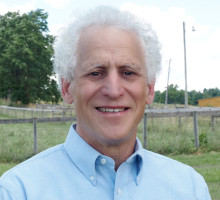
Johns Hopkins UniversityEst. 1876
America’s First Research University
Why Rural Electrification has Policy Resonance Today

Rural electrification in the United States (and most industrialized countries) is now a historical fact. But it remains an important goal in several developing countries, where (in 2019) about 13 percent of the world’s population--940 million mostly rural inhabitants--do not have access to electric power. For many years, the World Bank and other international aid agencies provided resources to build massive generating plants such as hydroelectric dams. Moreover, they offered support to construct central stations and distribution systems in cities and surrounding regions--similar to the networks that evolved in the United States.
But perhaps policymakers should pay more attention to the early history of American rural electrification, in which many farmers took advantage of isolated generation technologies, such as wind-turbine dynamos, internal-combustion-operated generators, and batteries. While farmers using such systems may not have enjoyed the maintenance-free operation that could be attained by having wires extended from central power stations, they nevertheless obtained several productivity- and life-enhancing benefits that electricity offered. Taking advantage of today’s small-scale and renewable-energy generators, rural electrification advocates in developing nations could gain greater success by pursuing a course of action that Americans abandoned in the 1930s.
To be sure, my suggestion is not original, as many academic researchers, nonprofit organizations, and corporations have already employed this approach with positive outcomes. Today’s version of isolated power systems, known as distributed generation (DG), can often provide reasonably priced electricity and higher reliability than can traditional generators linked to transmission and distribution lines. And because private and state-run utilities remain hesitant to invest in expensive infrastructure, just like American companies one hundred years ago, DG appears as an appealing alternative.
In pilot projects in Africa, communities have already begun establishing small-scale networks (often called microgrids or minigrids) that exploit renewable and nonrenewable distributed generation sources. For example, in one Kenyan village, more than sixty homes and businesses obtain power from an 8.5-kW solar photovoltaic cell system. Using “smart” (computer- or Internet-connected) technologies that manage demand and distribute power, similar networks provide electrified infrastructures that enable substantive economic and social activities. In Nigeria, a 60-kW photovoltaic array provides power for a battery bank, which is supplemented by a diesel generator, sufficient for a community of 350 households and 20 small businesses.
As with all situations of technology adoption, consideration of DG systems requires more than an analysis of costs. Large-scale grids managed by governments or other large organizations remain easier to subsidize than myriad small-and community-scale systems. This fact explains, in large part, why about 70 percent of all funding goes to grid approaches. Interconnected systems also can be supervised more efficiently (on a national scale) than disaggregated arrangements. But the costs for grid components (generators, transmission lines, and associated equipment) have remained constant for several years, while those for DG, such as wind- and photovoltaic electricity-generating systems, along with energy storage technologies such as batteries, have become cheaper. Requiring less time to deploy than large-scale grid technologies, moreover, DG systems can meet immediate and future demand at generally attractive costs. In theory--and at times in practice--distributed generation competes favorably with grid-connected networks on certain technical and economic criteria, though they sometimes meet administrative resistance.
In short, while central station service and interconnected power networks have long been viewed as the optimal way to deliver electricity to all customers, the approach may not satisfy almost a billion people who currently lack access to electric power. The future may actually lie in the past--employing a century-old model in which American farmers exploited small-scale and off-grid energy systems to achieve what they could not obtain through conventional means.




